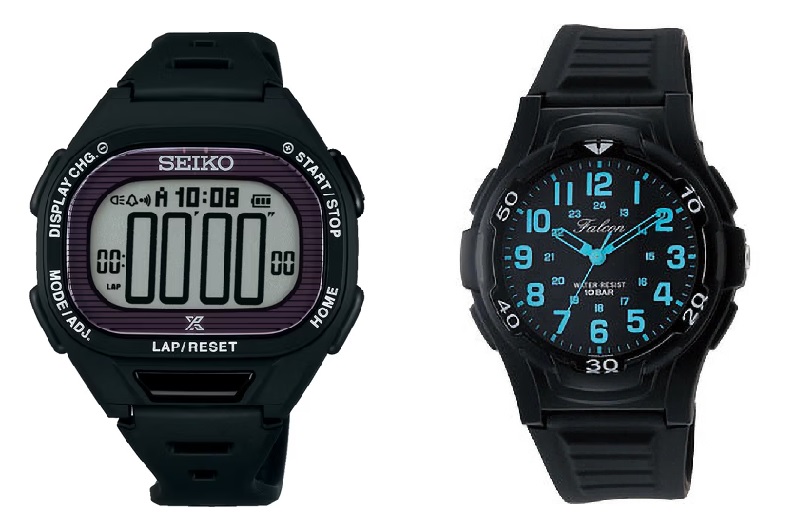On August 10, 2023, the Japan IP Hight Court ruled to dismiss an appeal by Airwair International Limited to the JPO’s rejection against a position mark for Dr. Martens’ Yellow Welt Stitch.
[Court case no. Reiwa 5(Gyo-ke)10003]
Dr. Martens’ Yellow Welt Stitch
Airwair International Limited, a UK company, applied a position mark consisting of a yellow stitching around the perimeter of footwear on the outer sole edge (see below) for use on leather shoes and boots in class 25 with the JPO on June 12, 2018 (TM App no. 2018-77608).
Allegedly, first use of the position mark on the Dr. Martens “1460” boots has dated back to 1960 in UK. Leather shoes and boots bearing the yellow welt stitch have been continuously distributed in Japan by the applicant or a local subsidiary (Dr. Martens Japan) via company store (61 shops at present) and major shoes retailers since 1985. Recent annual sales for Dr. Martens’ shoes in Japan exceed 6 billion Japanese yens and over 460,000 pairs. Airwair has routinely monitored and taken legal actions against lookalikes of shoes bearing the yellow welt stitch and been successful in stopping distribution of following shoes.
According to the brand awareness survey that targeted a total of 1,019 men and women aged from 15 to 59, 30.7% of the interviewees who have purchased leather shoes and boots could answer Dr. Martens at the sight of black leather shoes with the yellow welt stitch and 37.6% selected Dr. Martens from multiple choice.
On August 23, 2022, The JPO Appeal Board decided the yellow stitching of Dr. Martens does not possess its own distinctive character by stating that relevant consumers would not see the stitch as a source indicator, but as a mere decoration. The Board also negated acquired distinctiveness of the position mark based on the fact that a majority of frequent users of the goods in question could not connect the stitch with Dr. Martens. Accordingly, the Board sustained the examiner’s rejection (Appeal case no. 2021-2446).
Airwair filed an appeal against the JPO Appeal Board decision and argued inherent and acquired distinctiveness of the Dr. Martens’ yellow welt stitch in relation to leather shoes and goods.
IP High Court decision
Inherent distinctiveness
The Court paid attention to the circumstance that plenty of leather shoes and boots have been manufactured by means of the Goodyear Welted Method for long years and the thread stitched to attach the upper to the sole has often identical or similar color to the upper and sole. If so, in relation to yellow-colored shoes, a yellow stitch would be anything but distinctive.
Bearing in mind that the applied mark does not specify a color of the upper and the sole, the judge had a view that it is allowed to assess inherent distinctiveness of the position mark in relation to the shoes with a yellow thread, upper and sole and any colors.
Based on the foregoing, the Court found the position mark lacks inherent distinctiveness in relation to leather shoes and boots and shall be unregistrable based on Article 3(1)(iii) of the Trademark Law.
Acquired distinctiveness
The Court questioned relevance of the brand awareness survey that excluded consumers who had not purchased either leather shoes or boots in the past year. However, by taking account of an expert opinion that points out 15% shall be sufficient to admit distinctiveness of trade dress as a source indicator especially in fashion industry and the survey revealed there were over four times as many interviewees who selected Dr. Martens than Timberland (7.9%) from multiple choice, the judge ruled Dr. Martens’ yellow welt stitch has acquired a certain degree of recognition as a sign that the black leather shoes originate from the Airwair company.
In the meantime, the Court held there is doubt if the position mark would play a role in indicating its source even when used on a yellow or similar colored outsole or welt. As a matter of fact, Airwair has not taken actions against shoes having non-black outsoles and welts.
Given the applied mark does not restrict a color of shoes, a fact that Dr. Martens’ yellow welt stitch has played a role of source indication in relation to black leather shoes and boots is insufficient to find acquired distinctiveness of the appled mark and admit registration under Article 3(2) of the Trademark Law.
Obviously, the Court opens a gate to register Dr. Martens’ yellow welt stitch provided that a position mark consists of yellow stich and black upper and welt.























